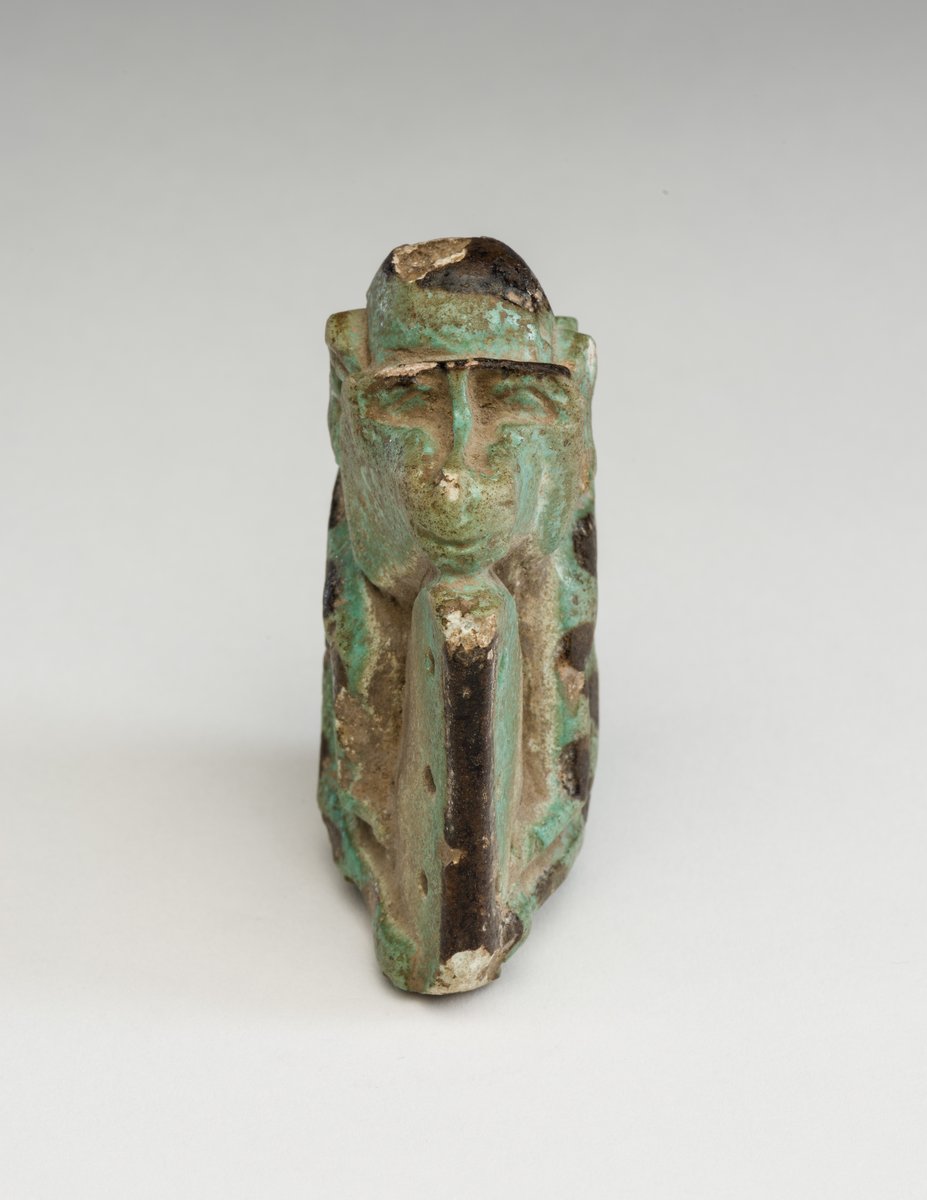
Magical Object with a Baboon
Egyptian Art
| Place of production | Asyut (?), Egypt |
|---|---|
| Date | Recent |
| Object type | sculpture |
| Medium, technique | Wood, gessoed, painted |
| Dimensions | 15,2 x 5,2 x 11,1 cm |
| Inventory number | 51.335 |
| Collection | Egyptian Art |
| On view | This artwork is not on display |
This wooden figure depicting a jar carrier imitates a servant statuette, a type of funerary equipment that served to depict a range of different working activities. These small statues were typical of the elite burials from the late Old Kingdom to the early Middle Kingdom. This piece is, however, fake, produced in modern times, belonging to a group of four servant statues all originating from the same workshop and purchased as one lot. The body is painted brick red; the hair is indicated by a deeper shade of red. He wears a knee-length white apron. His excessively long arms bend back at the elbows, and the yoke over his shoulders was fixed by passing it through the holes of his hands which, in a rather unusual way, are shown grabbing it from above. The right end of the yoke is broken off; the notch for the suspension of the water jar by a rope is still visible at the left end.
Forged servant statues regularly appear in the art market. Their doll-like, often clumsy appearance makes them attractive, charming artefacts that are easy to forge at a low cost but sell extremely well. A group of four figures in the Egyptian Collection, including this statuette, is claimed to have come from the Middle-Egyptian town Assyut, and a particularly close similarity in their size, body proportions and style of decoration suggests that they were evidently made by the same hand. Yet, the methods of manufacture and certain postures, uncharacteristic of the genuine pieces, reveal that they are all forged antiquities.
This record is subject to revision due to ongoing research.